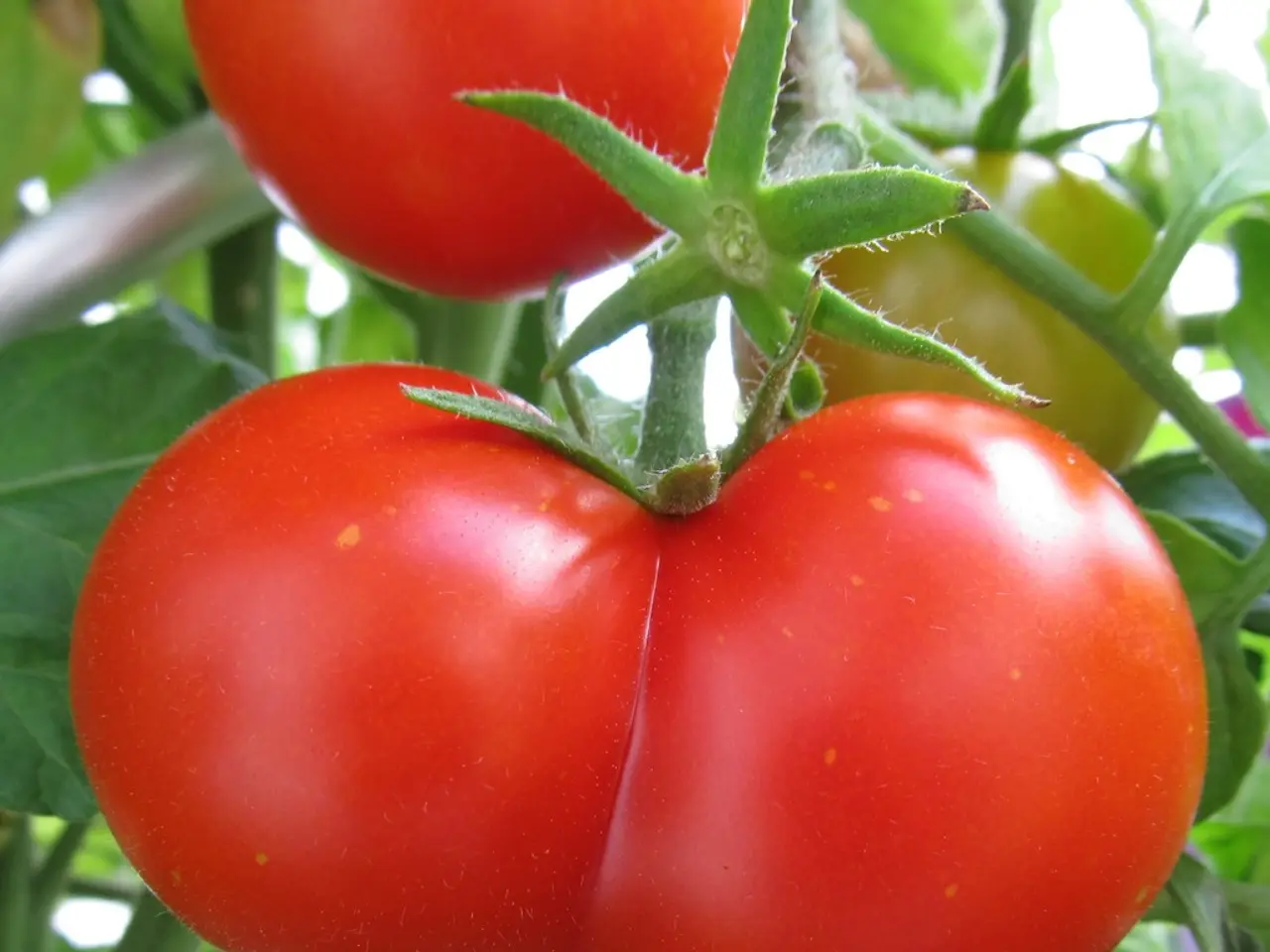Everything You Need for Successful Organic Tomato Farming
Growing fresh tomatoes from seeds at home is a rewarding and delicious experience. Here's a step-by-step guide to help you successfully cultivate your own tomatoes.
1. **Selecting Your Seeds** Choose high-quality tomato seeds that suit your space and taste preferences. Popular varieties include cherry, Roma, and beefsteak tomatoes.
2. **Gathering Supplies** You will need seed trays or small containers, seed-starting mix (a light, well-draining soil), and a warm, bright spot for germination.
3. **Planting Seeds** - Fill your trays or containers with seed-starting mix. - Sow seeds according to the depth and spacing instructions on the seed packet, usually about 1/4 inch deep. - Lightly water the soil to keep it moist but not soggy.
4. **Providing Proper Conditions for Germination** - Keep the soil warm (around 70-75°F or 21-24°C). - Provide plenty of light—if indoors, a sunny windowsill or grow lights to prevent leggy seedlings.
5. **Caring for Seedlings** - Once seedlings appear, ensure they have light to grow strong. - Thin seedlings if too many grow together to avoid crowding. - Water regularly to keep soil moist but not waterlogged.
6. **Hardening Off Seedlings** - Approximately 1-2 weeks before transplanting outdoors, gradually expose seedlings to outdoor conditions. - Start with a few hours in a sheltered spot, increasing time and sun exposure daily. - This toughens seedlings to prevent transplant shock.
7. **Transplanting Outdoors** - Wait until all frost danger has passed and soil is warm. - Choose a sunny spot with well-draining soil; enrich it with compost or fertilizer. - Dig holes deep enough to bury two-thirds of the plant, removing the lower leaves before planting. - Space tomato plants 30 to 48 inches apart. - Water thoroughly after planting to settle the soil around roots.
8. **Ongoing Care** - Water deeply and consistently to support fruit development; avoid dry spells or overwatering. - Add fertilizer or soil amendments such as fish meal, bone meal, and crushed eggshells to provide nutrients, especially if growing in pots. - Prune suckers (small shoots between the main stem and branches) if desired to improve airflow and fruit size, though it’s optional for beginners. - Support plants with stakes or cages to keep fruit off the ground.
9. **Harvesting** - Harvest tomatoes when fully colored and slightly soft to the touch for the best flavor. - Regular harvesting encourages more fruit production.
If growing in pots, use containers at least 12-15 inches deep with high-quality potting soil, and ensure good drainage. Following these steps will maximize your chances of growing healthy, delicious tomatoes from seeds right at home.
Remember, if the soil feels dry, spray water on the seedlings. Surrounding tomato plants with lantana, marigold, lemon balm, or herbs like basil can help keep pests away. When a seedling grows to 3-4 inches tall and has leaves, transfer it to a larger pot with sufficient drainage holes. Not all seeds will germinate, and the pattern of growth will be uneven. Water the potting mix before planting the seeds. If two or more seeds sprout in one pot, remove the thinner shoots when they are about two inches tall.
Happy gardening!
- A nursery could be an excellent source for acquiring organic seedlings if you'd prefer not to grow from seeds, or if you want to speed up the process.
- Caring for your tomato plants aligns with a healthy and wellness lifestyle, as proper nutrition, in this case, nutrient-rich soil, supports overall plant health, similar to eating nutritious food for human health.
- To extend your involvement in gardening, you might try growing other fruits, vegetables, or even herbs in pots or your garden for better food-and-drink diversity and homemade cooking options.
- For dedicated gardeners, consider incorporating gardening into your lifestyle by taking up interior plant decoration—planting small fruits, vegetables, or herbs in pots to enhance your home-and-garden ambiance and boost mental wellness.
- Engaging in activities like fitness-and-exercise and gardening harmoniously blend together, as both nurture a sense of responsibility, provide physical activity, and encourage patience.
- The growth of tomatoes from seeds fosters a strong connection with science as you learn about plant anatomy, growth cycles, and soil chemistry—enriching your overall knowledge while providing delicious fruits for your table.




